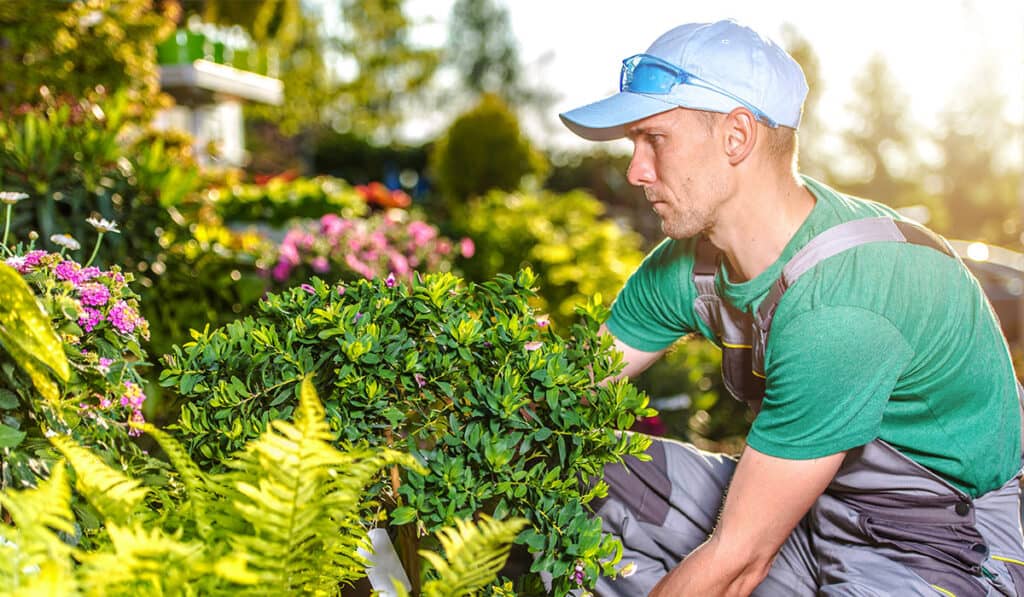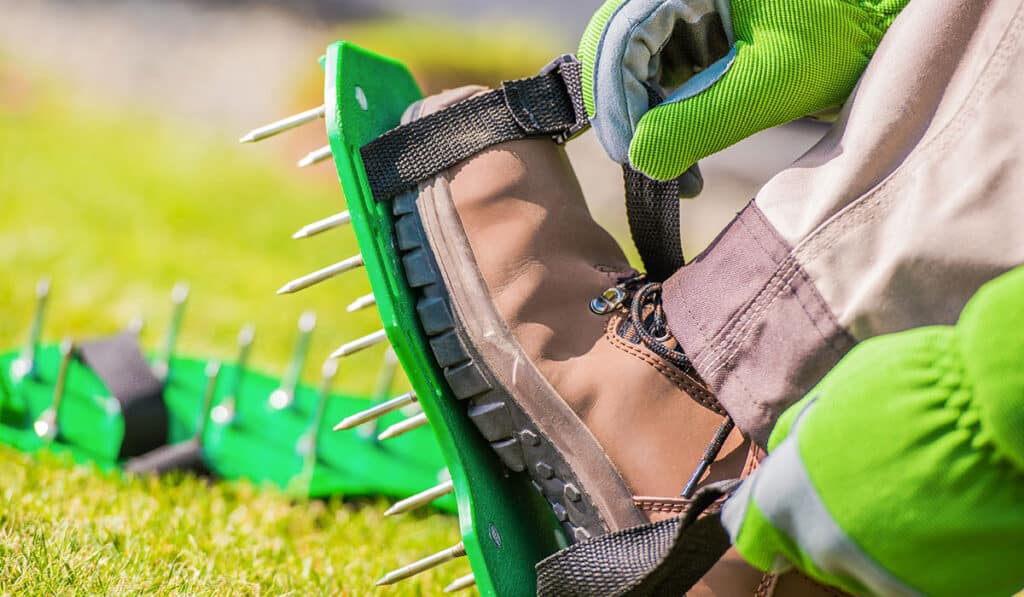Selecting the right grass is critical to establishing a new lawn. Whether you choose grass seed or sod, you want a healthy, beautiful, green lawn that is drought-resistant, shade-tolerant, durable, low-maintenance, and disease-resistant. From the coast to the mountains, climate characteristics vary throughout Northern California, and this can create a challenge when choosing the right type of grass.
Cool-season grasses work well in areas that have warm summers and cold winters. Warm-season grasses have good heat tolerance and work well in areas that have very hot summers and mild winters. Warm-season grasses are common in Southern California, but they are also used in areas of Northern California.
There are around 1,400 different species of grasses in the United States, so how can you know which grass type is best for your lawn? Below are five of the best types of grass for lawns in Northern California.
Bluegrass
| Color | Drought Tolerance | Disease Resistance | Shade Tolerance | Wear Recovery | Winter Color |
| Emerald to blue-green | 6/10 | 7/10 | 4/10 | 8/10 | 10/10 |
Named for their unique, blue-green color, there are several varieties of Bluegrass that are common in Northern California, such as Kentucky Bluegrass or Four-Way Bluegrass, which is a fast-growing, cool-season turfgrass blend. This grass is great in both sunny and shady areas and is commonly used for parks, play areas, sports fields, and residential and commercial properties.
Maintenance
Mowing: Bluegrass should be mowed 12 – 14 days after the sod is installed and at least once a week during the warm season. To encourage growth and protect the grass, you should mow it to 1 ½” to 2.5” in height and never mow more than a third of the blade at a time.
Water Needs:
Bluegrass has relatively short roots, which requires the lawn to be watered every day for the first two or three weeks after it is installed. After that, water it three or more times a week during warm weather and once or twice a week during cool weather to maintain a strong root system. If you have sandy soil, you may need to water more frequently than with clay soil. Coastal areas may require less water than Inland areas. If there is excessive runoff from slopes and mounds, you may need shorter watering times.
Fertilizer Needs: Use an all-purpose fertilizer in six to eight-week intervals during warm weather. If your grass turns light green, that’s an indication that it needs fertilization.
Disease: Bluegrass is resistant to many common lawn diseases. If you notice brown spots, try adjusting the water amount. If spots continue to persist, it may be an indication of a disease, and you should contact your local lawn and garden center for information on how to treat it.
Weed Control: The best way to prevent weeds is to keep your lawn healthy by watering and fertilizing it. You can use pre-emergent and post-emergent herbicides when your new sod has been established for at least four weeks. These herbicides are more effective if you catch the weeds when they are small.
Tall Fescue
| Color | Drought Tolerance | Disease Resistance | Shade Tolerance | Wear Recovery | Winter Color |
| Emerald green | 9/10 | 8/10 | 7/10 | 9/10 | 10/10 |
There are many different types of Fescue grasses, such as Fine Fescue and Tall Fescue. Tall Fescue grass is a fast-growing, drought-resistant, cool-season turfgrass. This tolerant grass is often used for roadsides, parks, recreation areas, sports fields, and residential and commercial properties. Tall Fescue is frequently used in grass blends.
Maintenance
Mowing: Tall Fescue should be mowed 12 – 14 days after the sod is installed and once a week during the warm season. To encourage growth and protect the grass, you should mow it to 2”” to 2.5” in height and never mow more than a third of the blade at a time.
Water Needs: During the first 14 – 20 days, you should water frequently enough to maintain moist topsoil to a depth of three inches. After that, water it three or more times a week during warm weather and once or twice a week during cool weather to maintain a strong root system. If you have sandy soil, you may need to water more frequently than with clay soil. Coastal areas may require less water than Inland areas. If there is excessive runoff from slopes and mounds, you may need shorter watering times.
Fertilizer Needs: Use an all-purpose fertilizer in four- to eight-week intervals during warm weather. If your grass turns light green, that’s an indication that it needs fertilization.
Disease: Tall Fescue is resistant to many common lawn diseases. If you notice brown spots, try adjusting the water amount. If spots continue to persist, it may be an indication of a disease, and you should contact your local lawn and garden center for information on how to treat it.
Weed Control: The best way to prevent weeds is to keep your lawn healthy by watering and fertilizing it. You can use pre-emergent and post-emergent herbicides when your new sod has been established for at least four weeks. These herbicides are more effective if you catch the weeds when they are small.
Bermuda Grass
| Color | Drought Tolerance | Disease Resistance | Shade Tolerance | Wear Recovery | Winter Color |
| Dark blue-green | 10/10 | 9/10 | 4/10 | 10/10 | 6/10 |
There are several varieties of Bermuda Grass that are common in Northern California. Bermuda Grass is a warm-season turfgrass that is often used for golf courses, sports fields, parks, and residential and commercial properties. This low-maintenance grass is a great option for high-traffic areas.
Maintenance
Mowing: Bermuda Grass should be mowed seven days after the sod is installed and once a week during the warm season. To encourage growth and protect the grass, you should mow it to 3/8” to 2” in height and never mow more than a third of the blade at a time.
Water Needs: During the first 14 – 20 days, you should water frequently enough to maintain moist topsoil to a depth of three inches. After that, water it three or more times a week during warm weather and once or twice a week during cool weather to maintain a strong root system. If you have sandy soil, you may need to water more frequently than with clay soil. Coastal areas may require less water than Inland areas. If there is excessive runoff from slopes and mounds, you may need shorter watering times.
Fertilizer Needs: Use an all-purpose fertilizer in four- to eight-week intervals during warm weather. If your grass turns light green, that’s an indication that it needs fertilization.
Disease: Bermuda Grass is resistant to many common lawn diseases. If you notice brown spots, try adjusting the water amount. If spots continue to persist, it may be an indication of a disease, and you should contact your local lawn and garden center for information on how to treat it.
Weed Control: The best way to prevent weeds is to keep your lawn healthy by watering and fertilizing it. You can use pre-emergent and post-emergent herbicides when your new sod has been established for at least four weeks. These herbicides are more effective if you catch the weeds when they are small.
Native Bentgrass
| Color | Drought Tolerance | Disease Resistance | Shade Tolerance | Wear Recovery | Winter Color |
| Medium to Dark green | 10/10 | 9/10 | 4/10 | 10/10 | 6/10 |
Native Bentgrass is a drought-resistant, slow-growing, cool-season turfgrass that is native to California and commonly found in Northern California. Native Bentgrass adapts well to different environmental conditions, and it’s used for golf courses and residential and commercial properties.
Maintenance
Mowing: Native Bentgrass should be mowed 12 – 14 days after the sod is installed and once a week during the warm season. To encourage growth and protect the grass, you should mow it to 1 ½” to 2” in height and never mow more than a third of the blade at a time.
Water Needs: During the first 14 – 20 days, you should water frequently enough to maintain moist topsoil to a depth of three inches. After that, water it three or more times a week during warm weather and once or twice a week during cool weather to maintain a strong root system. If you have sandy soil, you may need to water more frequently than with clay soil. Coastal areas may require less water than Inland areas. If there is excessive runoff from slopes and mounds, you may need shorter watering times.
Fertilizer Needs: Use an all-purpose fertilizer in four- to eight-week intervals during warm weather. If your grass turns light green, that’s an indication that it needs fertilization.
Disease: Native Bentgrass is resistant to many common lawn diseases. If you notice brown spots, try adjusting the water amount. If spots continue to persist, it may be an indication of a disease, and you should contact your local lawn and garden center for information on how to treat it.
Weed Control: The best way to prevent weeds is to keep your lawn healthy by watering and fertilizing it. You can use pre-emergent and post-emergent herbicides when your new sod has been established for at least four weeks. These herbicides are more effective if you catch the weeds when they are small.
Ryegrass
| Color | Drought Tolerance | Disease Resistance | Shade Tolerance | Wear Recovery | Winter Color |
| Emerald green | 7/10 | 7/10 | 4/10 | 4/10 | 10/10 |
There are different varieties of Ryegrass, including Perennial Ryegrass, which is common in Northern California. Ryegrass is a fast-growing, cool-season turfgrass that is frequently found in mixes with bluegrass or fescue. Ryegrass is often used for sports fields and residential and commercial properties.
Maintenance
Mowing: Ryegrass should be mowed 12 – 14 days after the sod is installed and once a week during the warm season. To encourage growth and protect the grass, you should mow it to 1 ½” to 2” in height and never mow more than a third of the blade at a time.
Water Needs: During the first 14 – 20 days, you should water frequently enough to maintain moist topsoil to a depth of three inches. After that, water it three or more times a week during warm weather and once or twice a week during cool weather to maintain a strong root system. If you have sandy soil, you may need to water more frequently than with clay soil. Coastal areas may require less water than Inland areas. If there is excessive runoff from slopes and mounds, you may need shorter watering times.
Fertilizer Needs: Use an all-purpose fertilizer in four- to eight-week intervals during warm weather. If your grass turns light green, that’s an indication that it needs fertilization.
Disease: Ryegrass is resistant to many common lawn diseases. If you notice brown spots, try adjusting the water amount. If spots continue to persist, it may be an indication of a disease, and you should contact your local lawn and garden center for information on how to treat it.
Weed Control: The best way to prevent weeds is to keep your lawn healthy by watering and fertilizing it. You can use pre-emergent and post-emergent herbicides when your new sod has been established for at least four weeks. These herbicides are more effective if you catch the weeds when they are small.
With so many different grass varieties to choose from, it can be difficult to know which type of grass is the best for your lawn. Your decision should be based on your climate and weather, how much sun or shade your yard has, lawn care requirements, and how much foot traffic your new lawn will have. These five types of grass are great options for lawns in Northern California.


